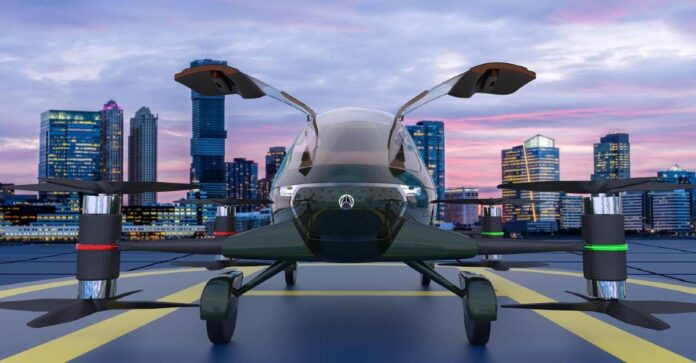Aren’t flying cars cool? Would you like to travel on the road and in the air in the same vehicle? Yes, then it is cool.
Jyotiraditya Scindia has tweeted the pleasure of being introduced to the abstraction of Asia’s first hybrid flying car which is going to become a reality ASAP.
Vinata Aeromobility is a Chennai based start-up, established in January 2021. They are expected to expose Asia’s first hybrid flying car in one of the prestigious exhibitions- Helitech Exhibitions, London.
Yogesh Ramanathan adored cars and aeroplanes more than anything. He spent more than 15 years in product design, development and manufacturing. Now he is living his dream and passion through Vinata Aeromobility.
Hybrid flying cars be used in the transportation of people and freight, in tourism, during medical emergencies, etc.
The suggested model is completely autonomous and made of lightweight and high-strength carbon fibre and composites.
The company hopes to bring off the first flight in 2023 and its first commercial flight in 2025.
A flying speed of about 120 kph and the capacity to carry two passengers at the same time are some features that can be said of. Maximum flight time can be an hour and the height can go up to 3000 feet.
The CEO has said that this vehicle is not only about VTOL (Vertical take-off and landing); it can travel a few distances on wheels using the battery.
Schaeffler has said that hybrid vehicles will be an aid to the electric shift in India. Hybrid vehicles can meet the immediate fundamental needs associated with e-mobility. The proximity of having more electric vehicles on Indian roads is not nearby.
A hybrid vehicle uses different power sources to run. Usually, the vehicle we use daily derives power from one source only- an IC engine which runs on petrol or diesel.
However, in the case of a hybrid electric vehicle, besides the IC engine, there is an electric engine that is capable of supplying power to run the vehicle. An interior combustion engine exercised in a hybrid vehicle may either persist on petrol or diesel fuel.
The fringe benefits of HEVs are improved fuel economy, efficiency, and lessened emissions. The detriment of HEVs is cost. The cost prices may be offset in the coming years due to higher gas prices and improved technologies.
Follow and connect with us on Facebook, LinkedIn & Twitter

